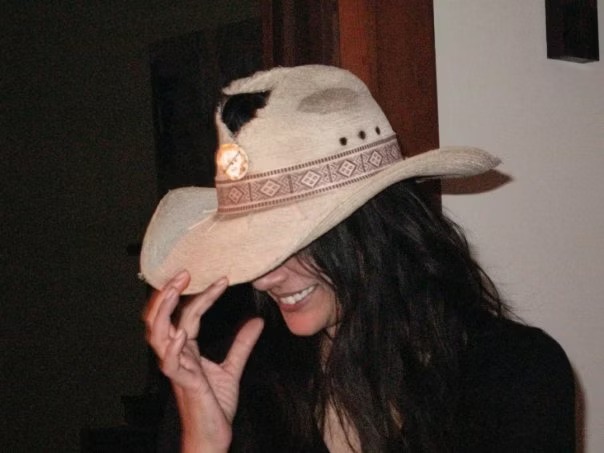Free and open to the public. Thursday to Sunday, 10AM—6PM.
150 Camp St, San Antonio, TX
Free and open to the public. Thursday to Sunday, 10AM—6PM.
150 Camp St, San Antonio, TX

Ruby City spoke with Anjali Gupta, curator, editor, multimedia producer and writer, who recounted her experiences with the artist as well as information about his practice and how the Christmas Trees developed over time.
Chuck Ramirez was my friend, confidant and mentor. Surely there are quite a few people who would describe their relationship to Chuck in similar terms, and that is no coincidence. He had a preternatural ability to cut through the flaccid, pedestrian tedium of casual banter and connect with people on a profound level. He was brilliant and intense, implausibly inappropriate, generous, brutally honest and amazingly kind…and hilarious. He was painfully hilarious.
Largely self-taught, Chuck came into his own as a conceptual artist in his 30s. Even his early work, kitschy as some of it might seem, combines the skill of a mature art director for HEB with the wit and insouciance of an intellect not overly tempered by academia. Most of the work he is known for are photographic pieces, but photography was really a medium of opportunity. Staging, framing, lighting and backgrounds become a sort of shorthand. In many cases, the subjects themselves are provisional—surrogate objects standing in for the people who once possessed them, loved them, discarded them. Chuck had a gift for monumentalizing the disposable.
The first series of trees was installed at Artpace in 1995. The installation at Artpace was straightforward, with traditionally festooned trees lining the windows facing Main Street like a holiday department store display. Artpace was new at the time, and an International Artist-In-Residence Program, as a concept, was perhaps a bit intimidating to the public. Chuck’s display helped humanize the space, making it feel accessible and a genuine part of our community.
A single tree appeared in the 1999 group exhibition, “Objects” at UTSA Satellite Space which explored the continuum of decorative to fine art. Chuck’s inclusion, a tightly bound tree dangling from the ceiling, is a decisively hybrid object that champions form over function. The piece functions as a precursor to Linda Pace’s commissioned trees which were done six years later for her home. These are decidedly formal and tailored to the space in which she was living—as well as her own artwork, which at the time explored color theory derived via the assemblage of disparate, commonplace objects. The blue tree’s hue is painstakingly matched to an Yves Klein bust in her bedroom. The spinning red tree references Linda’s fascination with the subconscious and metaphysical, as well as her book about the founding of Artpace, Dreaming Red, published in 2003.
The final iteration during Chuck’s lifetime was an installation at Three Walls, “A Tia Chuck Christmas.” Chuck staged a Christmas Tree lot within the tiny gallery. The scent of pine was overpowering. The space was freezing yet packed with friends, neighbors and gallery-goers—noses and fingers numb from the cold—happily chatting and bonding over this shared experience, individual memories and the anticipation of celebrations to come.
The element that separates Chuck’s trees from the purely decorative is the genuine sentimentality and longing that they evoke, which is a steady current throughout his oeuvre. On occasion, aphorisms ring true. It reminds me of a quote by Dave Hickey: “Bad taste is real taste, of course, and good taste is the residue of someone else’s privilege.” Art is evocative, experiential and subjective. There is always beauty in the banal if one looks closely enough.
I see Chuck as an important artist for a number of reasons. For many decades, Latinx and Chicano artists—especially self-taught artists—seemed relegated to a specific subset of artistic expression, with a predetermined aesthetic and provincial delegation. Latin American artists living outside the United States, on the other hand, were not so constrained, and easily meshed with the 90s art world residency/art fair/high end gallery jet set. For someone like Chuck, an artist of mixed heritage born and raised in San Antonio, to break through those barriers to American artists of color and find himself on par with Latinx artists of international esteem is extraordinary. Add to that his role in our community as an international ambassador, a connector and a steadfast denizen, and you have the makings of a legend.

Anjali Gupta is a curator, editor, multimedia producer and writer based in San Antonio. Gupta recently served as Director and Curator of the art space Sala Diaz and as Director of the Casa Chuck Residency, an invitational program for curators, critics and writers in the home of the late artist Chuck Ramirez. Prior, she was Executive Director and Editor-in-Chief of Art Lies, a contemporary art quarterly published in Houston. During her tenure, Art Lies received a multi-year award from The Andy Warhol/Creative Capital Publications Initiative for critical merit, which helped fund the publication and establish alternative distribution models for nonprofit arts journals.
Additionally, she has worked as a Lecturer in the Graduate Studio Art Department at the University of Texas at Austin, a panelist and final round juror for the Andy Warhol Foundation for the Visual Arts/Creative Capital Arts Writers Program (2008/2010) and a planning committee member for the 2011 Warhol/Creative Capital Arts Writers Convening. She has served on multiple panels at College Art Association, city public art selection committees in both Houston and San Antonio, and as an artist grant nominator for Art Matters, the Herb Alpert Foundation and Red Bull Arts, among other organizations.